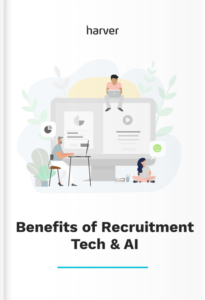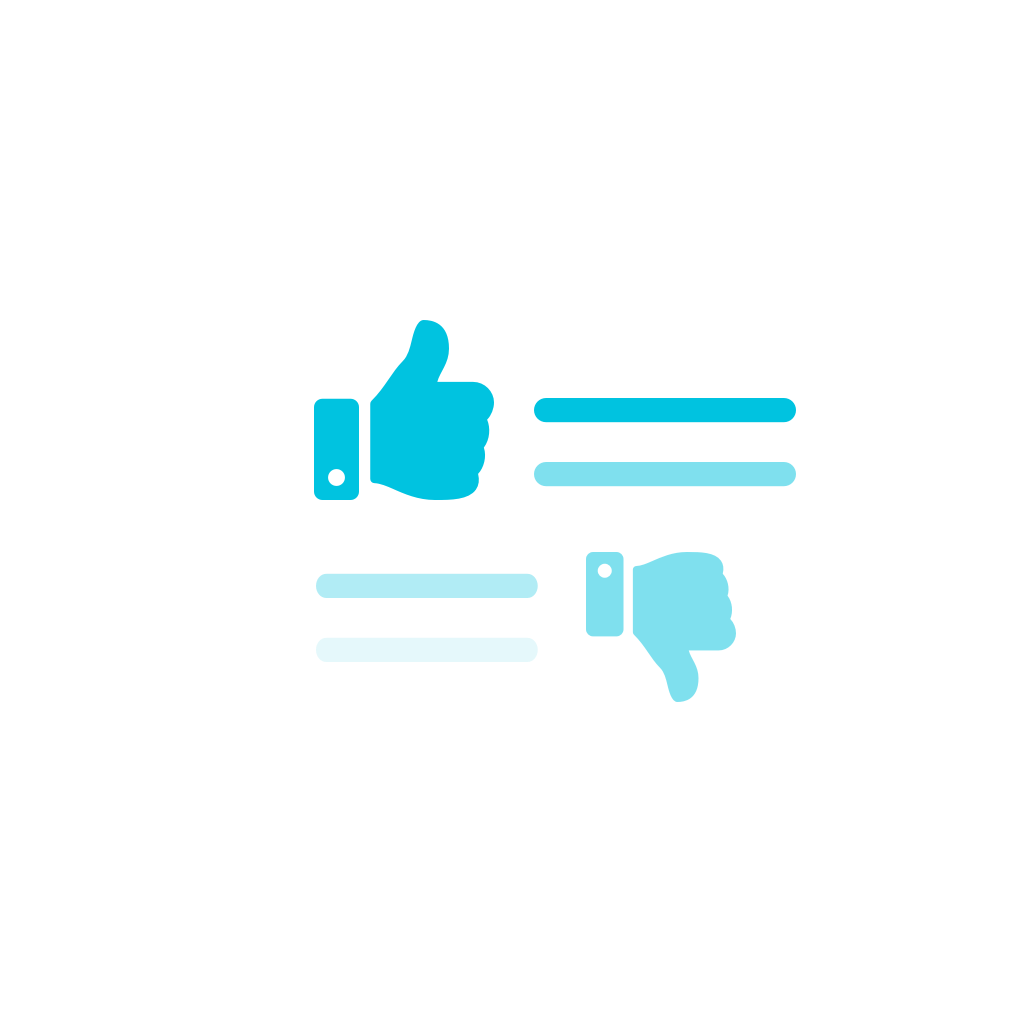If your company is looking to scale up employee numbers, meeting demand will be one of your biggest challenges. When you’re hiring at volume, regular recruitment processes simply won’t cut it. With competition for talent so fierce, even for entry-level roles, recruiting at scale requires an efficient, automated process.
In industries such as contact centers, logistics, retail, or hospitality, it can seem like an impossible challenge to get the right people in the right roles if you use a regular recruitment process, which isn’t designed to handle that level of demand.
We speak a lot about regular recruitment practices and volume hiring, but we’ve not explained the difference between the two. So in this article, we’re going to explore how volume hiring is different from regular recruitment, and why volume recruitment requires a different approach to regular recruitment.
But before we dive into an indepth look at the differences between the two approaches, let’s first explore what each process is.
What's in?
What the regular recruitment process looks like
In regular recruitment, recruiters are typically looking to hire one individual to fill one open role. It’s a whole process that starts with identifying a particular hiring need in the company and finishes with the onboarding of a new employee.
Traditional, regular recruitment is manual, labor-intensive, and a real drain on recruiters’ time and resources when multiple hires need to be made. Recruiters have to personally carry out multiple stages of the recruitment process that can so easily be automated.
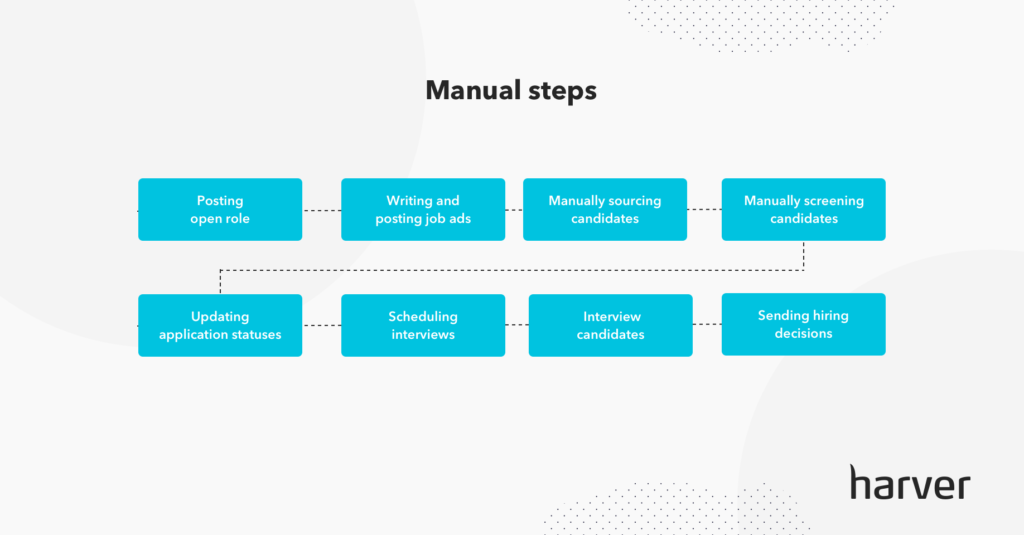
Still, in most cases, recruiters can successfully perform their duties, as the number of applicants is never too large to be handled manually. Although the process isn’t the most efficient, the end result is the desired one.
What the volume hiring process looks like
When you’re volume hiring, you’re recruiting multiple people for similar roles, typically entry-level roles with a low barrier for entry, meaning they’re an attractive prospect for a large number of people. For example, Coronavirus layoffs switching industries, or people entering the job market for the first time.
While there are no set numbers to define volume recruitment, when we talk about hiring in volume, we use our clients’ numbers as examples, and their typical yearly applicant volumes range from 5,000 up to 320,000 and beyond.
To put things into perspective: when you’re hiring for 6,000 contact centre agents a month, for example, you could be processing 600,000 applicants to fill those seats. This means that you need to adapt your processes to be able to handle much more work than you would in regular recruitment.
If we look at the high-level differences between regular and volume hiring, we see that the specifics differ at every step of the process.
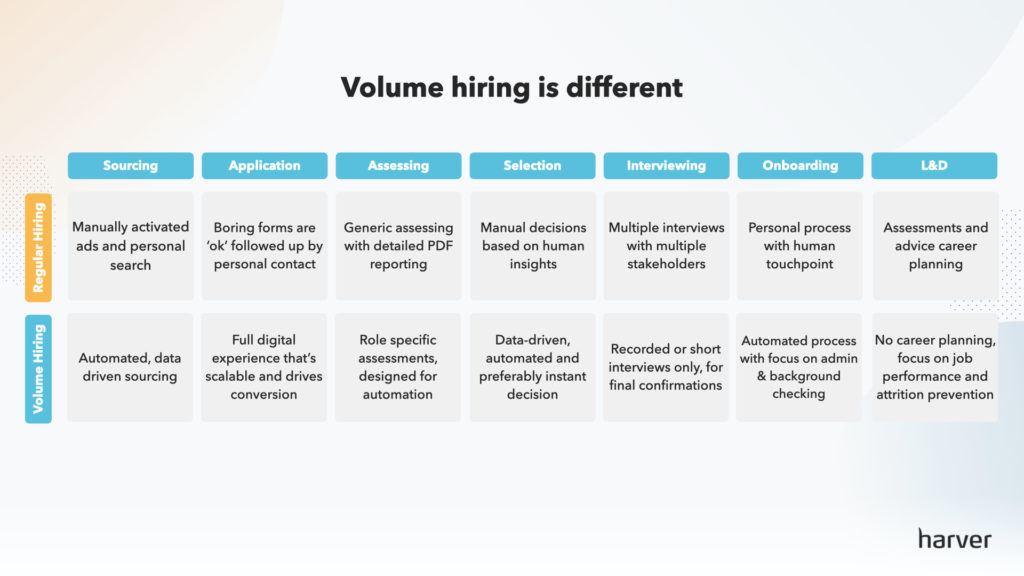
We’ll explore these differences in the next section, but it’s good to already have the overview in order to understand why can’t simply take your regular recruitment process and apply it at scale. It just doesn’t work.
Think of the human hours involved: if it takes you 10 minutes to manually review and contact a single applicant, imagine how long it’ll take you to do that for 600,000 applicants? And that’s just one stage of the recruitment funnel.
If you wanted to go down the regular recruitment route when volume hiring, you would need to increase recruiter headcount just to deal with all the manual work, otherwise you’ll be handling resumes forever – who has the time and resources for that?
Successful volume hiring has a streamlined process that utilizes recruitment software to increase efficiency through automation, instantly identifying top talent, all the while providing a personal touch and delivering an outstanding candidate experience.
Like what you see?
Don’t miss out. Subscribe to our quarterly digest to get the latest TA and TM resources delivered right to your inbox.
5 main differences between regular hiring and volume recruitment
Let’s dive into the differences between regular and high-volume recruitment, as they appear at every stage of the recruitment process, and how these differences should be approached by talent acquisition teams, for an efficient hiring process.
1. Sourcing
Regular recruitment
When carrying out regular recruitment, recruiters typically advertise the vacancy themselves. They write the job advertisement using the same biased language they’ve always used, basing the description on an old job description.
They then submit this job advert to the major job boards, hoping to catch the attention of a suitable candidate. They also personally recruit for the open position, manually searching for potential candidates before reaching out to them via the job boards or through social media.
Volume hiring
Candidate sourcing when volume hiring is the biggest challenge for this type of recruiting, typically causing bottlenecks. Finding enough applicants to sift through can be problematic, and you can’t ordinarily use conventional job boards because they won’t yield you the high quantity of high-quality applicants you’re after. Talent acquisition teams can spend up to ⅓ of their working week just on finding the right candidates to fill open roles.
To source great candidates for volume hiring you need to think strategically:
- Ask for employee referrals – leverage referrals to widen and diversify your talent pool easily. Employees aren’t going to recommend people they don’t think are suitable because it would reflect badly on them.
- Keep a pool of vetted candidates i.e. your talent pool, people who have previously applied to work at your organization and were unsuccessful.
- Go where the talent is – for example, if you need graduates, recruit at colleges and universities. Use programmatic job advertising to automate job distribution where the right candidates can be found.
- Analyze the data. Keep track of your sourcing metrics i.e. which source yields the most new hires? What is turnover like? Keep track of the channels that are the most lucrative and up the ante with them.
- Embrace technology. Use software such as Hiretual or Fetcher to bolster your sourcing efforts. Let AI help you with your candidate search and free up your recruiters to focus on more human-focused tasks.
To sum it up, to successfully source candidates in volume recruitment, the process must be automated. It should include data-driven candidate sourcing that leads into a full digital experience that’s scalable and ultimately drives conversion.
How AI & recruitment technology is changing recruiting experience
Find out how tech has helped other companies grow by enhancing both the recruiters’ and candidates’ experience!
2. Application
Regular recruitment
When conducting regular recruitment, most organizations don’t think about the entire candidate experience when they put together the application form, resulting in a boring process for applicants. Most applications don’t excite candidates nor get them buoyed up about the prospect of working at the company.
Just ask a talent acquisition leader to apply at their own company, or do that yourself, if you’re leading the recruitment teams at your organization. The process is often disappointing and lacks the depth of detail needed for the candidate to make an informed decision.
Yet, in regular recruitment, a candidate who’s a potential match gets the chance to have their questions answered after the initial screening call. Typically, the candidate interacts with HR, the hiring manager and some future colleagues as well, so they can ask about the role, the company culture, the work environment, and so on.
So even if the application process itself isn’t the most inspiring and educational, it can still lead to quality hires, as both candidates and talent acquisition teams are willing to put in the time and effort to make it a successful process.
Volume hiring
If we look at volume recruitment, the context is significantly different. Volume hiring is a numbers game – you need to get as many high-quality applications as possible, in order to find the best of the best, many times over.
Volume hiring typically deals with low-complexity, entry-level jobs, and candidates are typically looking for job security and a fast commitment. For this reason, applications are typically viewed as a hoop that needs to be jumped through.
On the other hand, recruiters need to attract as many applications as possible and to make sure they deliver quality hires, to prevent early attrition. This can be done by “selling” the job: building the employer brand and employee value proposition, showcasing the company culture during the application process, and giving candidates a sneak peek behind the scenes through realistic job previews.
Here’s an example of candidate experience from Valvoline.
Ready to transform your hiring process?
In our interconnected world, applicants talk, and you want them to talk about you for the right reasons. If you give them an exciting application that makes them want to come and work for you, you can bet your bottom dollar they’ll share their excitement with others, who also might apply.
Keep the application short and sweet, especially for low-entry roles, because we’ve found the longer the application, the higher your desertion rate will be.
3. Assessing
Regular recruitment
Recruiters usually carry out initial screenings, manually, shortly after sourcing candidates. They filter applications, review resumes and cover letters by hand, checking for education, prior work experience, and background matching, believing these to be indicators for whether a candidate will be a good fit or not.
They’ll then use whatever data they have or gut instinct to identify who they believe are the top candidates, before asking successful applicants to carry out role-specific assessments, testing them for the ‘requisite skills’ the position needs.
Volume hiring
When volume hiring, if you’re dealing with hundreds, even thousands of applications, applicants have to be screened and assessed automatically. It’s an impossible task to assess candidates manually, and if you take too long to process an application, you’re likely to lose the candidate.
In entry-level jobs, candidates expect a fast process and care more about getting job security than about their career progression. This means that the employer who reacts first is likely to be the chosen one. The longer the process, the less likely is it to result in a good quality hire.
To speed up the assessment phase in volume recruitment, candidates can be automatically assessed for specific skills, character traits, and abilities via specific tests that accurately predict future job success. These can be a mixture of pre-employment assessments, such as personality questionnaires, situational judgement tests, or multi-tasking assessments.
You can get familiar with the various types of assessments used in volume hiring below.
By employing technology to sift resumes and applications, you can set predefined selection criteria, i.e benchmark what a high-quality employee in your organization is, and screen and score applicants against these criteria, rather than benchmark against arbitrary indicators such as education or work experience. We know that for low-complexity, entry-level jobs, past experience is not a reliable performance indicator for future success.
So in volume recruitment, candidates should be assessed automatically and scored based on their skill set and company fit. This approach is not only less prone to error and hiring bias, but it’s also easier to scale without increasing recruiter headcount.
Not to mention that the experience improves for both the candidates and the talent acquisition teams: candidates go through a faster, more informative, and more fair process and recruiters only have to interfere in the final stages of the process – interviewing and making the hiring decision.
4. Interviewing
Regular recruitment
After the screening and assessment, recruiters invite the top applicants forward for an interview. The recruiters will go back and forth with applicants to schedule job interviews, trying to find a time that suits both parties. Although annoying and time-consuming, this step is still manageable when hiring a regular number of employees.
Interviews are an essential part of the recruitment process as they allow both candidate and interviewer to meet for the first time. Recruiters use these interviews to help guide their hiring decision, using the candidate’s attitude during the interview, their ability to answer interview questions, and how well they performed as benchmarks for their future success.
On the other hand, candidates can have their questions answered during the interview phase. So in regular recruitment, the application process and the interview give both parties enough information to work with, so they can decide whether they want to continue or not.
Volume hiring
When volume hiring, you’ll have multiple applicants to interview, and it’s too time-consuming to schedule that many interviews manually. Even though the interviews themselves shouldn’t be automated, the scheduling part can and should be. Volume recruiters should use technology to automatically schedule calls with the candidates who fit the selection criteria after the assessment phase.
Alternatively, if you’re mass hiring, you can invite applicants to record a short video where they answer predetermined questions for you to review, or have technology evaluate their answers for you. This is one of two times throughout the entire recruitment process where you actually need human input – the other is when you make your hiring decision. All the other stages of recruitment can be automated.

5. Selection
Regular recruitment
After the interview, recruiters will typically carry out background checks and make a hiring decision before offering the job to the person they believe to be the best candidate. If they get this wrong and the employee quits early or doesn’t accept the job, it can be a costly mistake to make, but the cost is significantly lower than that of a bad hire in volume recruitment.
Volume hiring
In volume recruitment, the selection is much more complicated, as the number of candidates is much higher. This means that the talent team invests much more time screening and selecting candidates, and this time translates into costs.
When volume hiring, you’re constantly having to make numerous hiring decisions to fill the same type of roles, even more so if you have a high attrition rate. Since most candidates have similar profiles, a manual selection process is most often flawed and prone to bias. It’s therefore crucial to have clear selection criteria in place and to have a standardized and unbiased way of selecting candidates.
With recruitment tools such as Harver, which is built for volume hiring, you can be sure that your selection is data-driven and free of bias. Candidate matches and scores are easy to interpret, as the platform does the hard work and calculates the job and culture fit based on the skills and characteristics of top performers in your company.
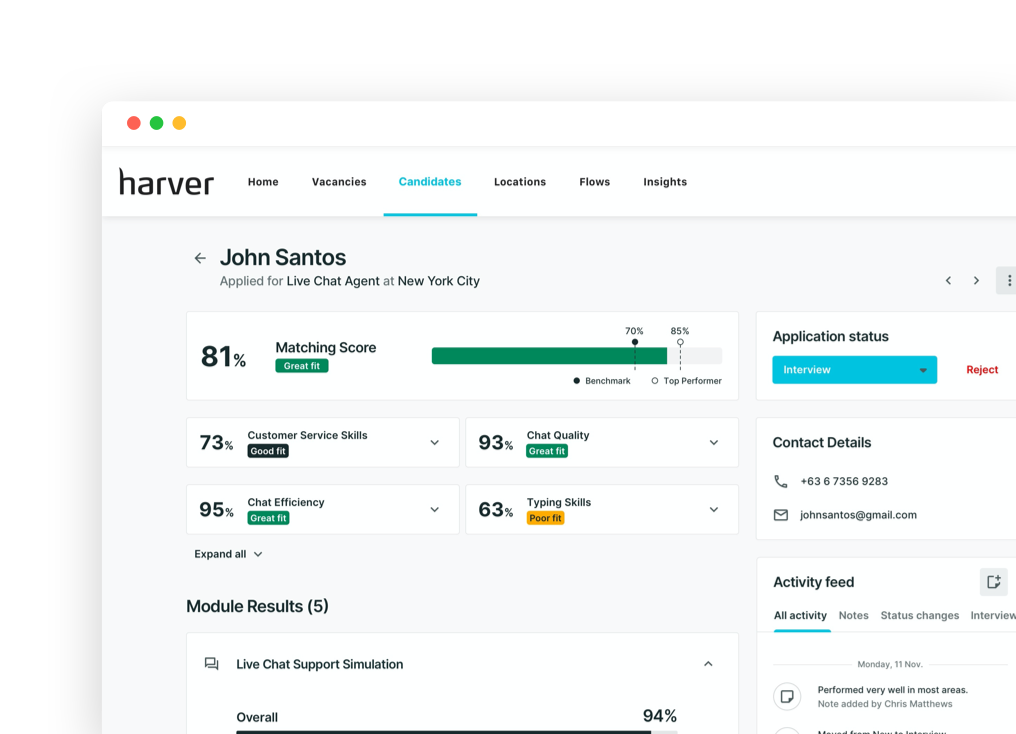
Depending on how much control you want over the final decision, you can choose to automate not only the stage progression, but also the selection itself, by accepting candidates who score above a certain benchmark, and automatically rejecting the others.
Stop guessing,
Start data-driven hiring.
Learn how you implement a modern candidate selection process, that is: streamlined, experience-driven and backed by data.

Next steps
Ultimately, you can’t do volume hiring with the same strategy and tools you use for regular recruitment. It’s neither efficient nor fair. Instead, when hiring at scale, you need a solution that’s built with the challenges of volume hiring in mind.
Harver helps you effortlessly manage thousands of applications by:
- Streamlining your volume hiring process,
- Increasing your efficiency through automation,
- Easily identifying top talent through a two-way matching framework,
- Enabling fast decision making at scale, based on science and data,
- And all the while providing a personal touch and delivering a winning candidate experience from the outset.
If you’d like to see how Harver can transform your volume hiring process, you can book a demo below.
Ready to transform your hiring process?

